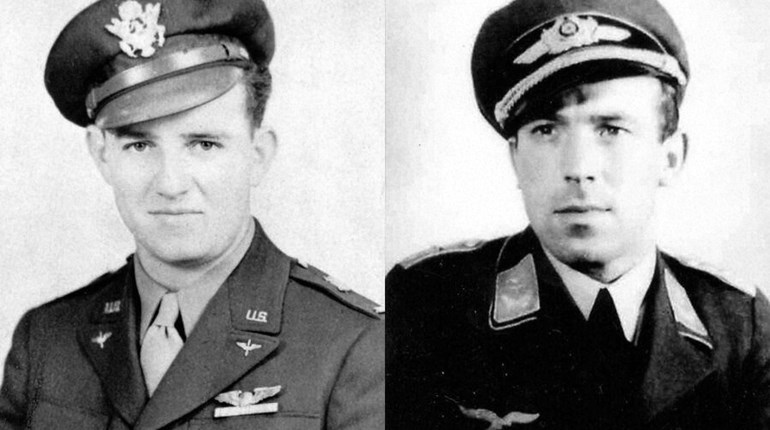

It’s not uncommon to encounter the belief that European World War II operations after D-Day were the equivalent of golf’s “gimme.” Against an undersupplied Wehrmacht, an overwhelmed Luftwaffe, and an irredeemably sociopathic Third Reich’s self-predation, it’s often assumed the Allies’ 11-month march into Germany must have been … well … easy, though the nip-and-tuck December battles of the Ardennes Counteroffensive is sometimes recollected.
If that narrow victory at the “Bulge” is an insufficient reminder, September 1944’s Operation “Market Garden” ought to put a comprehensive end to any such notions of ease. Despite infrastructure and supply challenges created by two-and-a-half years of Royal Air Force and Army Air Corps bombing, the Germany military machine remained an immensely skilled and dangerous antagonist. Seventy-two years ago this week, Market Garden entered the history books as a costly defeat for the Allies, and dashed any hopes of ending the war by Christmas 1944.
Bridges in the Netherlands and into Germany were the keys for success in the “Market” component of operations.Much of the impetus behind Market Garden was British Field Marshall Bernard “Monty” Law Montgomery (of El Alamein fame). Monty believed that a northern pincer movement into the Ruhr Valley, complemented by Lt. Gen. Omar Bradley’s 12th Army group to the south, would convince even Adolf Hitler that the western war was lost. Many American commanders did not agree with the Viscount on the details, but Allied Supreme Commander General Dwight Eisenhower managed to coalesce the disparate factions on huge airborne-led assault. Sunday, September 17 was the date chosen for a series of massive parachute and glider drops like those that had so disarrayed the German rear at Normandy in June.
Bridges in the Netherlands and into Germany were the keys for success in the “Market” component of operations. The First Allied Airborne Army—consisting of many American and British units including the 82nd and 101st Airborne Divisions—met with initial successes. The 101st, for instance, captured four of five bridges assigned to it early on the first day.
Elsewhere, operations were less successful, and in a pattern that would eventually stall and sabotage the achievement of most Allied objectives.“Garden” was intended to consist of follow-on advances by the combined XXX Corps, but it would be plagued almost from the outset by logistic, communications and weather setbacks.
Elsewhere, operations were less successful, and in a pattern that would eventually stall and sabotage the achievement of most Allied objectives. British forces were not able to drop as close to their objectives as many American units, and this was particularly costly in the attempts to capture bridges at Arnhem (over the Rhine) and Nijmegen (over the Waal) in the Netherlands. The belief that German units were uniformly disorganized and poorly commanded was stunningly disproven. Heroic British and Polish forces eventually withdrew from Arnhem after enduring nine punishing, back-and-forth days resulting in a 70 percent casualty rate. (Only in April 1945 would Arnhem finally be liberated from the stubborn Axis defenders.) As with many other Allied positions, fire support from artillery and resupply would fall well short of often-desperate needs.
In retrospect, many factors contributed to the failure of Market Garden. Perhaps most damaging was an essentially hasty—and unlike the case of D-Day’s success, the lack of a meticulously practiced—plan. Montgomery’s desire to take advantage of perceived German disability was understandable, yet German commanders (like Generalfeldmarschall Walter Model and Obergruppenführer Wilhelm Bittrich at Arnhem) did not respond with any of the hesitancy displayed in June: Their units may have initially been piecemeal, but they fought with tenacity and increasingly effective organization and leadership, and at the correct times and locations.
There may also have been a crucial betrayal of Allied plans by a member of the Dutch resistance named Christiaan Lindemans. He was believed to have worked with British intelligence as early as 1940, and was even imprisoned by the Germans for five months in late 1942 and early 1943. In a complex web of intrigue, he was likely recruited as a double agent by the Germans in his attempts to free his pregnant wife from German captivity on charges of espionage.
Whether Dutch, German, Russian or English intelligence actually controlled him in September 1944 is uncertain, but the defeat at Arnhem almost certainly lengthened the entire war by many months. Lindemans never confessed to passing on any of the Market Garden plans, but he certainly had the access to have done so. Even the circumstances of his death in 1946 were long debated: execution in the Tower of London, death by suicide in Scheveningen Prison, and escape to South America were all possibilities. Only an exhumation in 1986 and the surfacing of a suicide note in 1997 would confirm his ultimate fate.There may also have been a crucial betrayal of Allied plans by a member of the Dutch resistance named Christiaan Lindemans.
Whether a poor plan, treachery or German tenacity was responsible for Market Garden’s failure, the Allies would wait nearly six more months for a major bridge capture and widespread access to the heart of Germany. Like the Remagen story, this decisive clash was captured by Hollywood, though in somewhat better fashion: 1977’s “A Bridge Too Far.” Based on Cornelius Ryan’s book of the same title and William Goldman’s screenplay, the likes of Sean Connery, Dirk Bogarde, Edward Fox, Michael Caine, James Caan and Maximilian Schell quite authentically bring the story to life.
Whether read or watched, it’s a fine history lesson and engrossing tale, as well as another opportunity to be grateful for the American Warriors of both past and present.
































